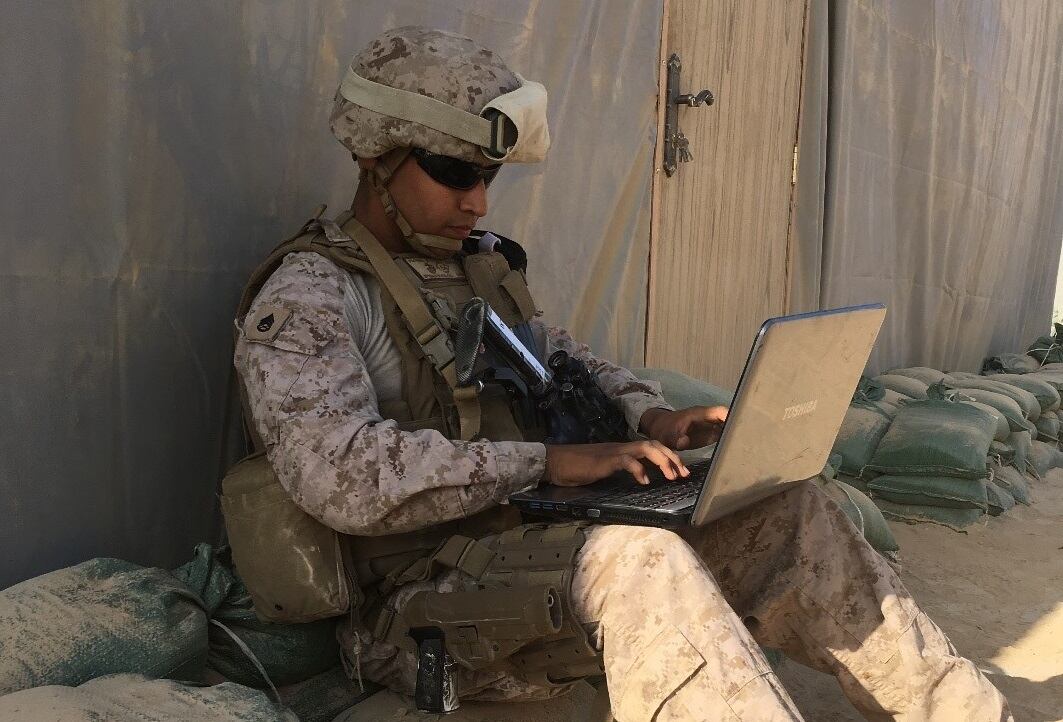Marines recruited today have grown up in a different world than Sergeant Major of the Marine Corps Troy Black did. It’s a world defined by increasingly rapid technological growth, which requires Marine recruiters to connect to prospective Marines in new ways.
But, Black rejects the idea that generational differences are a new thing, or that the use of TikTok and Instagram by new Marines and high schoolers thinking about joining will affect their ability to complete whatever mission the Marine Corps throws at them.
“I would have bet that the Vietnam veterans that recruited me probably thought there was something wrong with the Pepsi generation too,” Black said. “You can go back any generation there is always going to be a challenge.”
“It’s not so much the challenges of the generation, it’s how we communicate with different generations and that evolves throughout history,” he said.
RELATED

Even with identifying the challenge, the sergeant major said Marine Corps recruiters are more than capable of handling their mission and finding ways to reach out.
Black said that while many new apps may be unfamiliar to recruiters, they are still part of a generation that had smartphones most of their adult lives and understand how to move through social media — at least enough to connect with potential recruits.
The Marine holding the gun
While most of Marine leadership is focused on the equipment and structure the Corps requires for its next big fight, the sergeant major of the Marine Corps is focused on the Marines holding the gun or the unmanned equipment controller.
“What does the Marine Corps need to do in 10 years — that’s usually a discussion about stuff,” Black told Marine Corps Times in an exclusive interview Jan. 27.
But the top enlisted Marine is more worried about “the Marine that has to fly the X, shoot the X, carry the X,” he said.
The sergeant major’s summit on recruiting and retention was held aboard Marine Corps Base Quantico, Virginia, from Feb. 3 to Feb. 7 and included the Corps’ Manpower and Reserve Affairs, Training and Education Command and Marine Corps Recruiting Command.
The summit’s goal was “to provide a comprehensive assessment of the Talent Management process and to provide guidance and recommendations that support the Commandant’s Planning Guidance,” according to the administrative message announcing the summit.
‘Street to fleet’
There is one big challenge that recruiters may not easily be able to overcome, however.
The pool of potential Marines is shrinking as time moves on, Black said, which requires the Corps to be smarter about how it develops and retains talent.
Interest in joining the Marine Corps, or any other military branch, is low. Only 11 percent of young people say they will likely join the military, a Department of Defense survey from 2017 showed. It’s the lowest point in nearly a decade, Marine Corps Times previously reported.
That said, “Recruiters are doing a phenomenal job of finding people to be Marines,” Black said.
Where the Marine Corps needs to find improvements is what happens after a recruit signs his contract, he said.
The sergeant major questioned the Marine Corps’ “street to fleet” recruiting strategy, which focuses on getting a Marine through the initial recruitment and training process and out to their initial unit as quickly as possible.
Black said the “street to fleet” strategy was very effective and will remain part of the Corps’ talent management strategy going forward, but he said the system puts a lot of pressure on the Marines’ initial unit to develop and retain them.
The February seminar discussed ways the Marine Corps could lift that burden off the units and find the key reasons Marines are not re-enlisting or fulfilling their entire initial contract before separating from the Corps.
“What we could probably do a better job is figuring out okay, how do we reduce non-EAS attrition?” Black asked. “How do we work on how we promote and retain? How we work on how we evaluate how you? How we reward someone? And then ultimately, how do we assign them? How do we develop now those skills that need to be able to be a warfighter?”
These questions are even more important to answer now as the Marine Corps is on the eve of a potentially major redesign, he said, and possibly eliminating some military occupancy specialties while potentially creating whole new job fields.
This is part 2 in a three-part interview series with Sergeant Major of the Marine Corps Troy Black.




